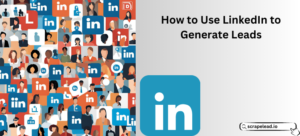Contents
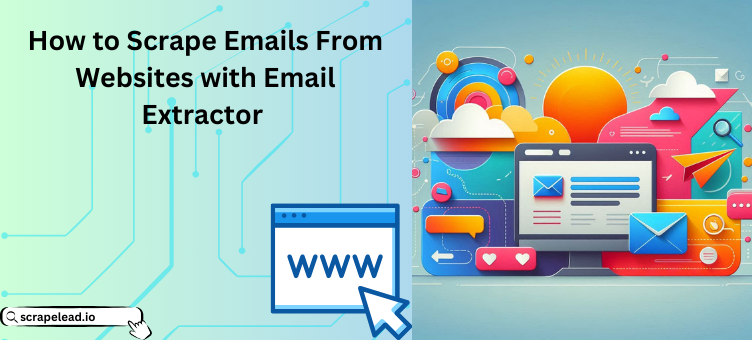
How to Scrape Emails From Websites with Email Extractor
In 2025, You can boost your lead generation by 50% or more with the right strategy.
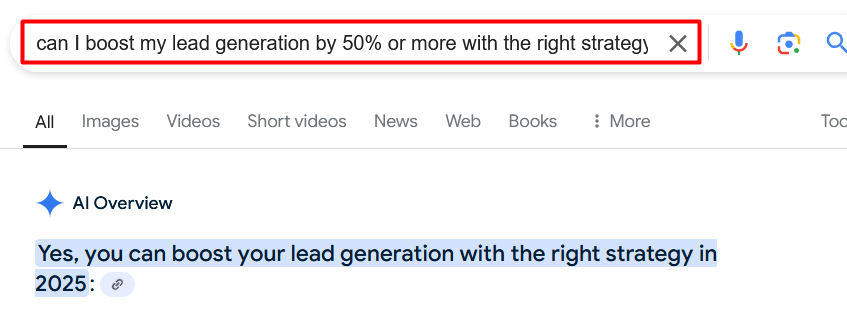
Whether it’s for expanding your network, reaching out to more clients, or landing more life changing opportunities, effective email scraping does the magic.
But let’s get real: it’s not as simple as copy-pasting.
There are technical hurdles, legal restrictions, and best practices you need to follow to do it effectively and ethically.
The good news?
You don’t have to stress over all these hurdles, and restrictions because I’ve got you.
So in this post, we’ll show you exactly how to scrape emails from a website without breaking the law, no coding, just point and click, some pro tips, and 4 worst mistakes to avoid when extracting email addresses from ANY website.
Let’s get into it!
What is Email Scraping?
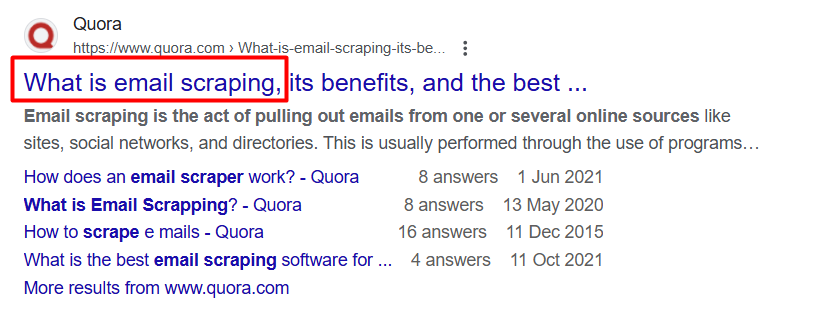
First things first, what’s this email scraping even about?
Well, Email scraping is basically the process of collecting email addresses from websites for outreach, marketing, or research purposes.
It’s a very powerful way to build targeted email lists and connect with your audience more effectively.
How it works?
It involves using website email extractor tools to crawl websites, locate email addresses, and organize them for easy use.
Lets say, you’re a fresh digital marketer starting out in your career and want to find businesses to pitch to “I can make you more money” or I’ll help you do XYZ.
What do you connect with them?
You go online and search those businesses up, get their email and then pitch to them–so you can help them and they help you add more cash to your bank account.
So that’s more of what email scraping is about–getting emails.
But Why Use Email Scraping in 2025, Anyway?

Okay, Let’s get one thing straight here: we’re in a digital-first world where you need to stand out for you to amount to anything worth investing time into.

And standing out means connecting, communicating effectively and getting things done.
How do you communicate? Through email (well, mostly).
Then how do you get those emails? Of course through website email scraping, that’s how.
So why on earth is email scraping so worth it:
- Generate leads faster: Find new clients or collaborators quickly without any manual effort.
- Segment your campaigns: Target specific audiences based on niche industries.
- Stay competitive: Reach more prospects in less time compared to traditional lead generation methods.
- Networking: Connect with tons of collaborators, investors, or potential business partners.
Who Can Benefit from Website Email Scraping?
Scraping emails from websites isn’t just for marketers—it’s for anyone (including You).
Here are the top groups of professionals who can benefit the most from website email scraping:
- Digital Marketers: Build segmented email lists for targeted campaigns and higher engagement.
- Recruiters and HR Teams: Connect directly with potential candidates through job boards or professional directories.
- Startups and Entrepreneurs: Find investors, early adopters, or collaborators to grow your business.
- Nonprofit Organizations: Reach out to potential donors, sponsors, and volunteers for campaigns.
- Researchers and Academics: Gather contact information to collaborate with peers or distribute surveys.
- And Freelancers: Expand client networks by finding prospects on niche websites or directories.
Ahh, found my group but is it even legal to scrape emails from website?
Is It Legal to Scrape Emails from Websites?

Let’s address the big question: Is scraping emails legal? The answer: Yes and no—it depends on how and where you collect the data. Here’s a breakdown:
| Factor | Legal or Not? |
|---|---|
| Privacy Laws (GDPR, CCPA) | Illegal if you scrape emails without consent or use them for unsolicited emails |
| Website Terms of Service | Many websites hate scraping, so always check their policies |
| Consent and Opt-Ins | Legal if you contact people who have explicitly agreed to receive your emails |
| Scrape Public Data Only | Legal if the emails are publicly available and used responsibly. |
Website Limitations and API Restrictions
Before we get into the how-to, You need to know the roadblocks websites and their API set up to protect their data:
Website’s Limitations
| Limitation | Description |
|---|---|
| Content Restrictions | Some emails are hidden behind private sections or forms |
| Rate Limits | Excessive scraping requests may trigger IP bans or account suspension |
| Captcha Challenges | CAPTCHAs block bots from collecting data automatically |
| Dynamic Content | JavaScript-rendered content requires more advanced scraping techniques. |
Website’s Official API Limits
Some websites provide APIs to access their data, but these have strict limits:
| API Limitation | Description | API Rate Limits |
|---|---|---|
| Rate Limits | Restricts the number of API requests per hour or day. | Typically 100-200 requests/hour. |
| Authentication | Requires API keys or tokens to access data securely. | N/A |
| Access Restrictions | Limits access to sensitive or private information. | Depends on subscription tier |
Let’s now roll over into the how-to😊
How to Scrape Emails from a Website Without Breaking the Law (No Code)
Forget the hassle of coding or manually searching for emails. With the right website email extractor tool, you can collect emails quickly and easily for ANY website on internet space.
So what’s a website email extractor tool?
It is software designed to collect publicly available email addresses from websites. It automates the ENTIRE process of crawling web pages, finding email patterns, and organizing the data for easy use.
That being said, in this how-to demo, we’ll use ScrapeLead’s email extractor to do it in six simple steps.
Why ScrapeLead’s Website Email Extractor?
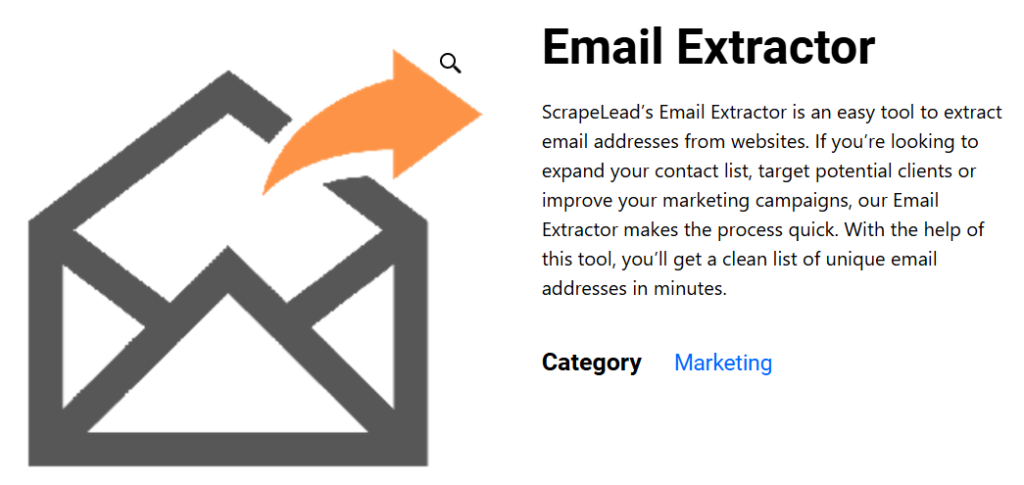
- Ease of Use: It’s user-friendly, reliable with a point and click intuitive interface that saves you extra time and effort.
- Built-in Validation: Ensures the emails collected are valid, active, and deliverable
- Data Export Options: Allows seamless export to formats like CSV, Excel, or JSON for easy integration with CRMs.
- Automation and Scheduling: Automates repetitive tasks and enables scraping on autopilot for consistent data collection.
- Compliance Features: Ensures scraping aligns with privacy laws and website terms so you don’t get banned.
So How Can ScrapeLead’s Email Extractor Help Your Business Grow?
Well, it provides businesses with a competitive edge simply by automating email collection. Here’s how it can help:
- Lead Generation: Quickly build high-quality email lists for targeted marketing campaigns.
- Personalized Marketing: Use segmented lists to craft personalized email campaigns that boost engagement rates.
- Recruitment Opportunities: Identify potential job candidates directly from professional websites or career boards.
- Cost-Effective Networking: Save hours of manual labor by automating the email collection process
- Customer Retention: Stay connected with existing customers through regular, personalized updates.
PLUS, It lets you focus on outreach and engagement while it does the heavy lifting for you.
Now let’s Go scrape emails from website free–step-by-step:
Step ONE: Sign Up or Log In to ScrapeLead
Visit our official website, create an account, or log in (if you already have an account) to get started.
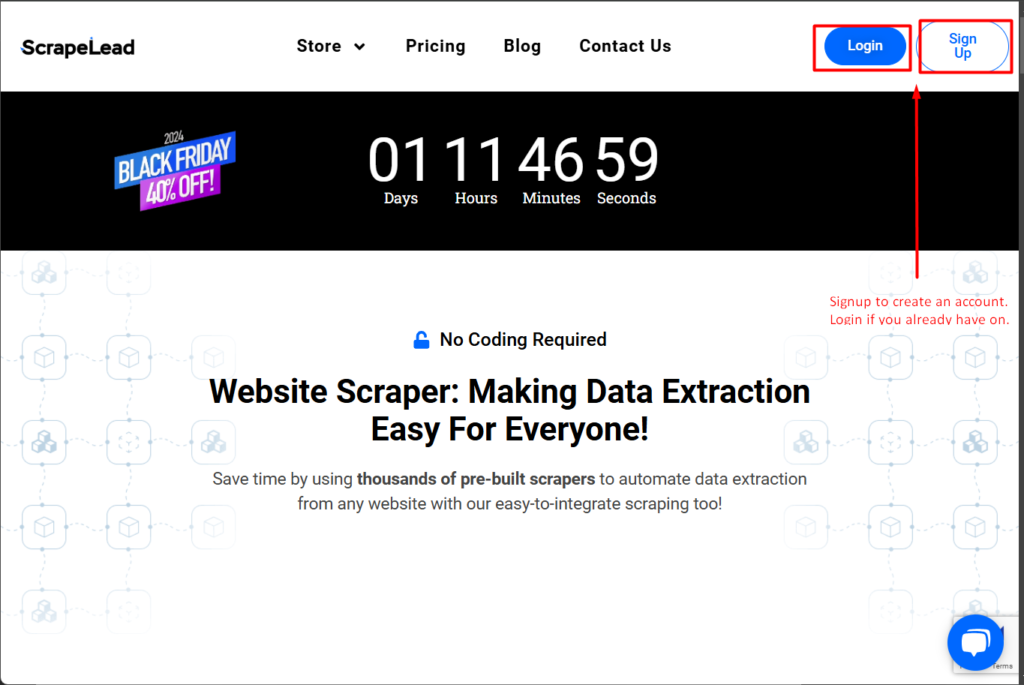
Step TWO: Choose the Email Extractor Tool
From the dashboard, head over to store, then select the Email Extractor.
Our tool is specifically designed for scraping publicly available emails so you can easily get emails from any website, anytime, anywhere.
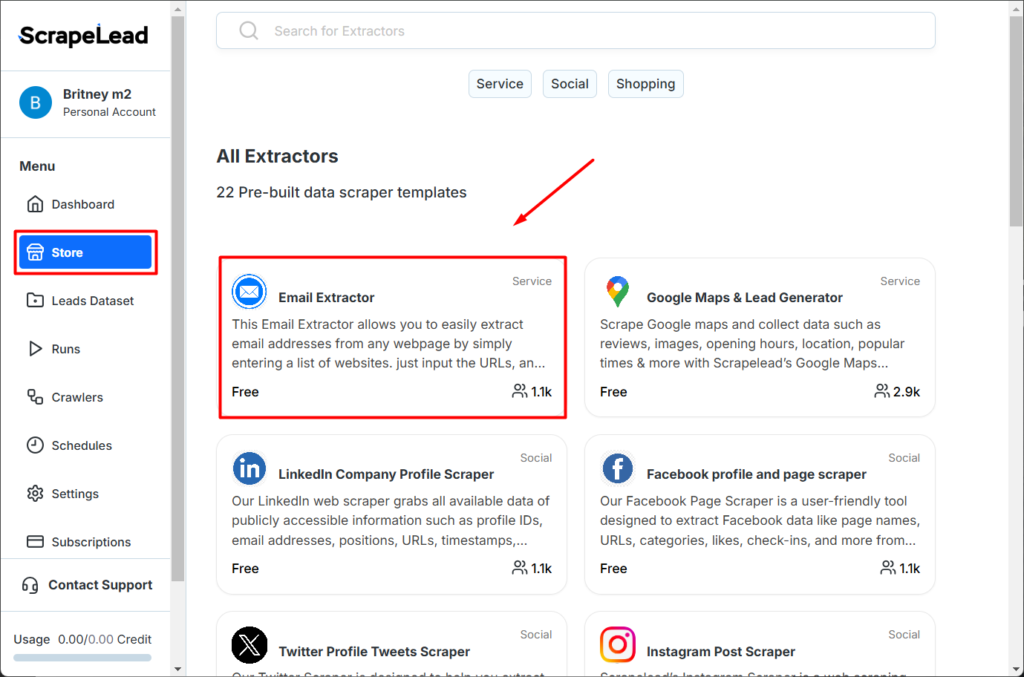
Step THREE: Input Website URLs
Copy and paste the URL(s) of the websites you want to scrape. ScrapeLead supports bulk uploads for larger projects.
In our scraping example, we’ll only extract emails from IAG media, Mailer profit, and Gadzhi.
Here’s how you copy the URLs:)
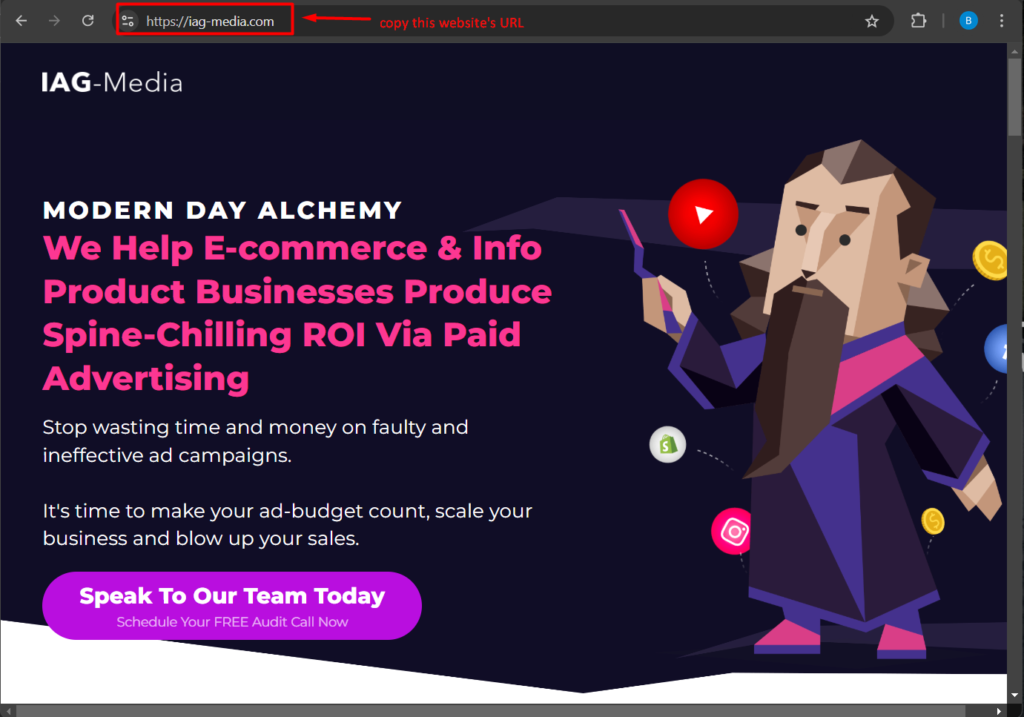
THEN paste the URLs into the email extractor tool:)
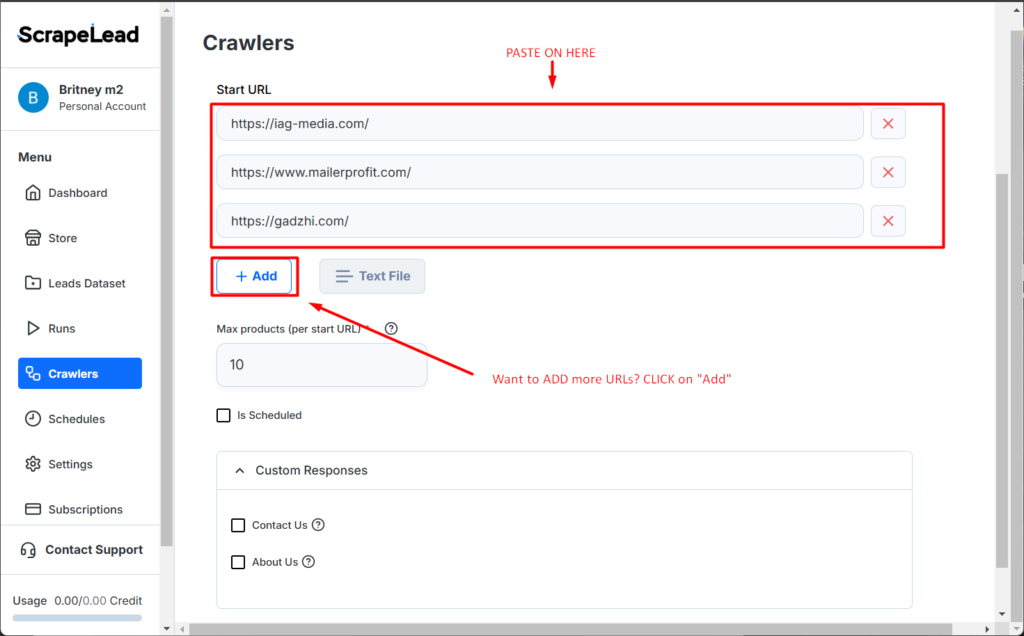
Step FOUR: Set Parameters
Customize your scraping settings: Specify how many pages to scrape.
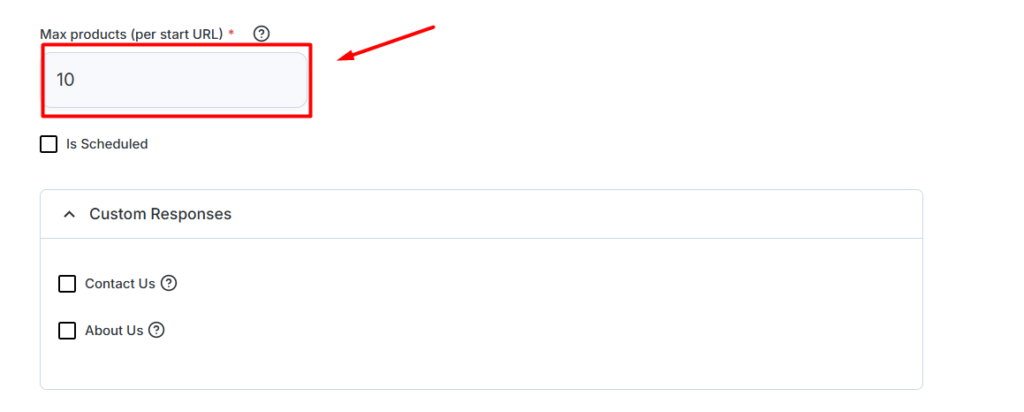
Step FIVE: Start Scraping
Hit “Start,” and the crawler will begin extracting emails. You can monitor progress in real-time as the data flows into neat, organized columns.
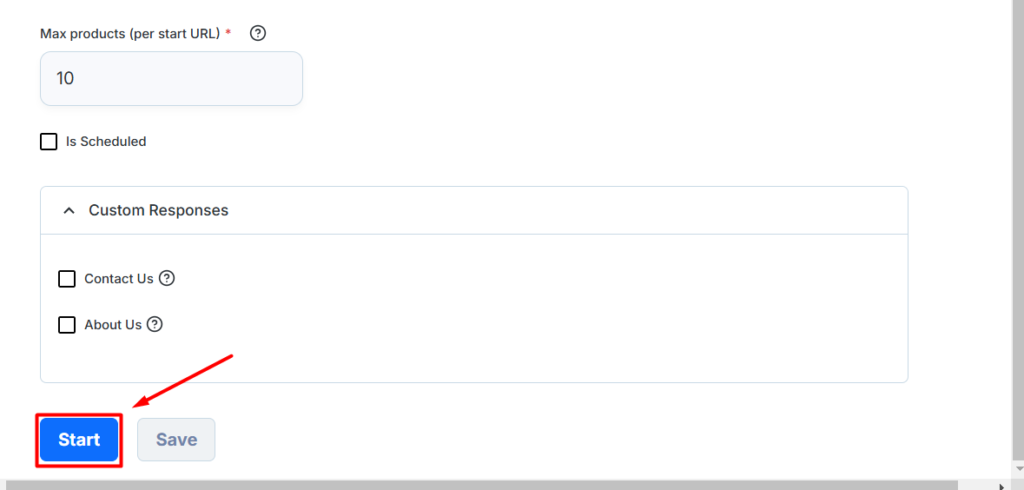
Step SIX: Export Your Data
Once the scraping is complete, export your data in formats like CSV, XML, or JSON for immediate use in marketing, research, or outreach campaigns.
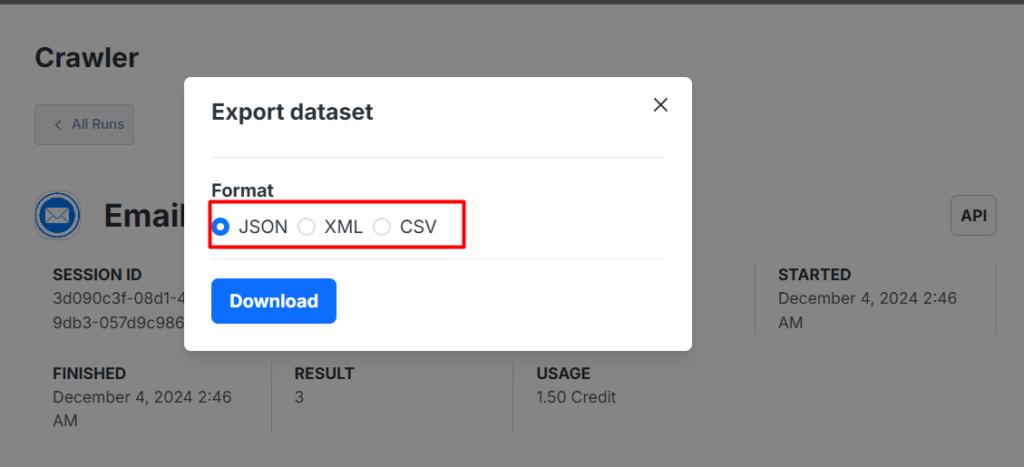
That’s it.
In just seconds you can extract emails or contact info from any website.
Email Scraping vs. Traditional Lead Generation: What’s Better?
When it comes to building contact lists, businesses often wonder whether to use traditional lead generation methods like cold calling or rely on email scraping from websites.
So to end the confusion, Let’s compare the two:
| Factor | ScrapeLead’s Email Extractor | Traditional Lead Generation |
|---|---|---|
| Efficiency | ✅ Instant results with automated scraping. Emails are collected in minutes. | ❌ Time-consuming manual tasks like cold calls and surveys slow down the process. |
| Cost-Effectiveness | ✅ Budget-friendly with free and premium options. | ❌ Expensive due to staffing, advertising, and subscription costs. |
| Customization | ✅ Provides highly segmented email lists for niche-specific campaigns. | ❌ Offers limited targeting options and lacks flexibility for specific audiences. |
| Scalability | ✅ Effortlessly scales for large volumes using automation. | ❌ Difficult to scale without significant investment in resources. |
| Lead Quality | ✅ Delivers real-time, validated emails from niche websites. | ❌ Results in inconsistent data quality that may be outdated or irrelevant. |
Final verdict: In the 80s? Go for the old-school traditional methods. But in the digital age? Email scraping is your unfair advantage. It’s a faster, more cost-effective way to build lists, especially for targeted campaigns.
So what next?
Pro Tips On How to Use the Scraped Emails to Boost Your ROI
Once you’ve extracted emails from a boatload of websites to build your list, the next step is maximizing its value. Here’s how:
1. Personalize Campaigns for Better Engagement
Segment your list based on demographics, interests, or industries. For example, you can target tech startups with offers crafted specifically to their needs.
2. Integrate with CRM and Email Marketing Tools
Export your data from ScrapeLead in formats like CSV or JSON (if you haven’t already done so) and upload it to tools like HubSpot or Mailchimp for seamless outreach.
3. Follow Up Strategically
Use automation to schedule follow-up emails, ensuring you stay top-of-mind without overloading your recipients.
4. Track Performance Metrics
Measure open rates, click-through rates, and conversions to optimize your campaigns over time.
5. Maintain a Clean List
Regularly validate your email list using ScrapeLead’s built-in validation feature to reduce bounce rates and improve sender reputation.
By combining a quality list with strategic outreach, you can achieve higher ROI from your campaigns.
The Do's and Don'ts of Email Scraping
DON’Ts
- Do not Scrape private or restricted data (e.g., hidden behind login pages or password-protected areas).
- Do not Ignore privacy regulations—violations can result in heavy fines.
- Do not Overload websites with scraping requests, which can trigger IP bans or legal action.
- Do not Spam people with unsolicited marketing emails or irrelevant messages.
DO’s
- Scrape publicly available data only, ensuring it’s accessible without violating site terms.
- Review robots.txt files and site terms to ensure you’re scraping within permitted limits.
- Use double opt-ins when contacting scraped email addresses to confirm consent.
- Document your sources to maintain transparency and legal compliance.
- Use the data ethically and responsibly to build trust and maintain your sender reputation.
4 Worst Mistakes to Avoid when Scraping Emails from Websites
Even with the best tools like ScrapeLead’s email extractor, mistakes can hurt your email scraping efforts in the worst way. Here’s how to steer clear of them:
1. Ignoring Privacy Laws
Why It’s a Problem: Violating privacy laws can result in heavy fines and damage your brand’s reputation.
Quick fix: Only scrape publicly available emails and avoid contacting people without consent.
2. Overloading Scraping Requests
Why It’s a Problem: Sending too many scraping requests in a short time can trigger website bans or IP blocks.
Quick fix: Use ScrapeLead’s rate-limiting features to stay under the radar.
3. Using Outdated Email Lists
Why It’s a Problem: Old or invalid email addresses lead to high bounce rates and wasted effort.
Quick fix: Regularly validate your scraped email lists using ScrapeLead’s built-in validation tool.
4. Scraping Irrelevant Data
Why It’s a Problem: Collecting emails from the wrong websites results in poor-quality leads.
Quick fix: Always target websites aligned with your industry or goals.
Wait wait wait, there’s more good stuff:
Conclusion
Let’s be for real here: Email scraping doesn’t have to be complex or freaking risky.
With ScrapeLead’s Email Extractor, you can collect accurate, validated email addresses effortlessly and ethically.
Whether you’re a marketer aiming to launch targeted campaigns, a recruiter searching for top talent, or an entrepreneur building partnerships, ScrapeLead simplifies the process while keeping you safe from any legal schemes.
And so by taking advantage of our free email extractor, staying within legal boundaries, and applying the tips I’be shared, you can open up a wealth of opportunities for your business in 2025 and beyond.
FAQ
Yes! With ScrapeLead’s Email Extractor, you can scrape emails without any technical skills.
It’s legal if you scrape publicly available data and comply with the website’s privacy laws.
ScrapeLead includes a built-in validation tool to ensure the emails you collect are active and deliverable.
Anyone looking to build email lists—marketers, recruiters, entrepreneurs, and nonprofits.
Start scraping instantly
Sign up now, and get free 500 credits everymonth.
No credit card required!
Related Blog
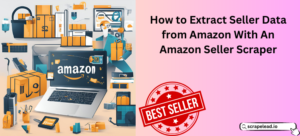
How to Extract Seller Data from Amazon With An Amazon Seller Scraper
Gain a competitive edge using an Amazon seller scraper to extract valuable seller data and optimize your business strategy.
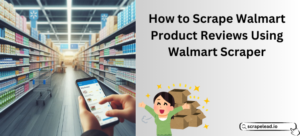
How to Scrape Walmart Product Reviews Using Walmart Scraper
Discover smart ways to scrape Walmart product reviews and turn data into actionable insights.

